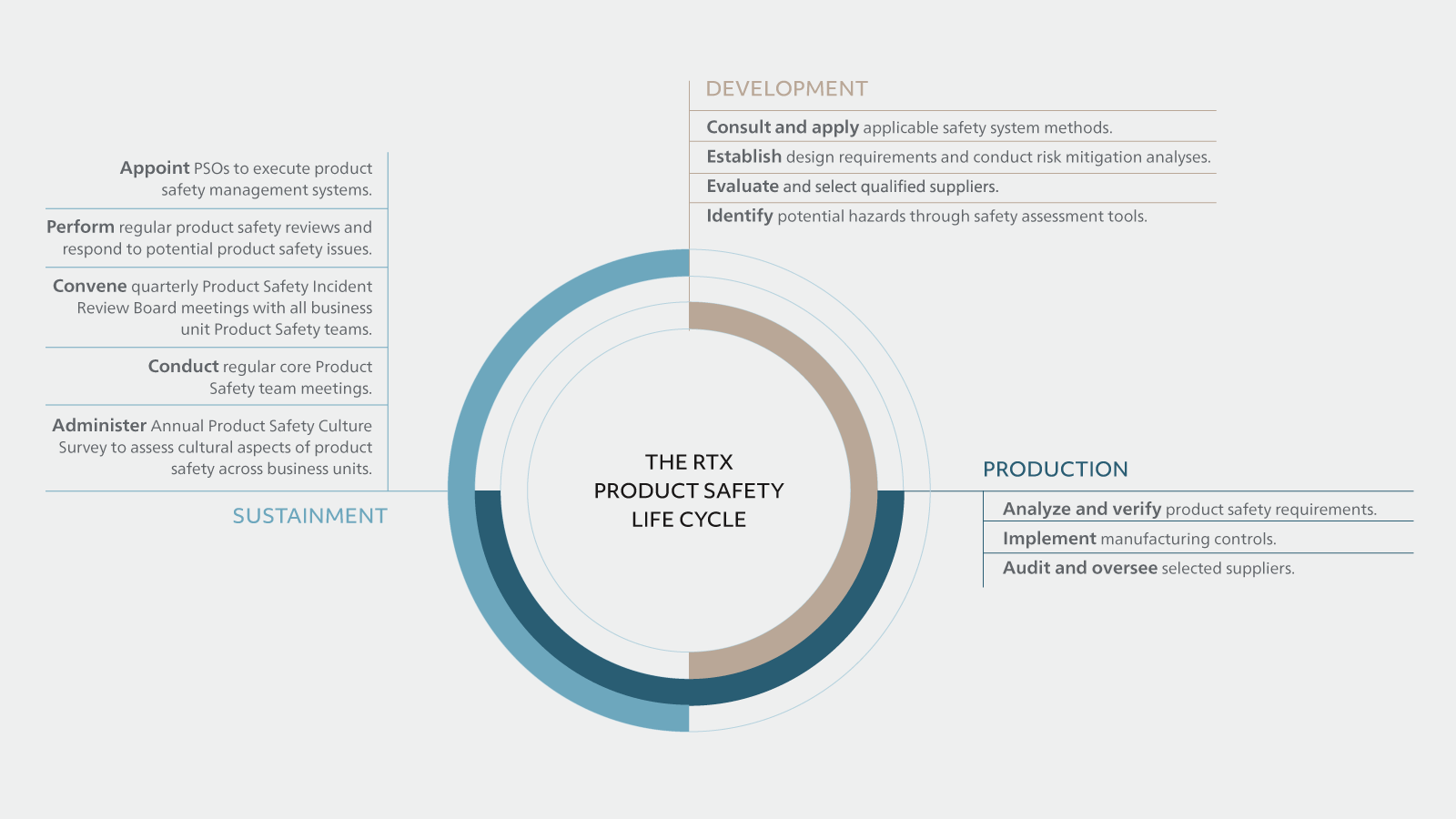Promotion of continuous improvement in our product safety and quality culture, processes and products
We take a comprehensive, enterprisewide approach to mitigate the impact of potential disruptions, ensuring continuity as we adapt to business changes and transformational events.
Our approach

RTX uses a business resilience and crisis management approach to identify critical processes across our organization. This enables us to take proactive measures and respond effectively to potential threats or major incidents, wherever they arise.
- Whether it’s a vital component for an airline to safely transport passengers or a radio enabling defense forces to communicate, our products are mission-critical and must be delivered without disruptions.
- Our business resilience and crisis management program conducts annual tabletop exercises that are designed to prepare the company for a wide range of crises, whether natural disasters, accidental or man-made.
- Our program works to identify and manage climate-related risks and helps sites identify, assess, prepare for and respond to severe weather threats such as hurricanes, tornadoes and flooding. It also accounts for risks associated with longer-term changes in weather patterns, sea level rise, temperature increases, drought and other environmental impacts.
- Key sites review and update their incident response and continuity plans annually; conduct threat and vulnerability assessments at least every two years; and complete physical security assessments at least every three years.
Product safety, quality & transparency

We are dedicated to designing, manufacturing, servicing and maintaining safe products that meet or surpass all relevant government standards, industry regulations and customer safety and quality requirements.
- We manage safety risks throughout the product life cycle by applying safety system methods consistent with military standards (MILSTD-882) and commercial aerospace recommended practices (ARP-4761), along with aerospace standards for quality throughout the design process.
- Our safety system ensures all RTX products and partners – from production through end use – meet or exceed our government customers’ requirements. This includes the regulatory requirements of civil aviation authorities such as the U.S. Federal Aviation Administration, the European Union Aviation Safety Agency and other relevant agencies.
- Our CORE (Customer Oriented Results and Excellence) operating system supports the execution of our product quality standards while continuously refining our processes to enhance product safety. CORE is how we work, accelerate progress and drive continuous improvement.
- Our Quality Council — comprised of senior leaders in Quality and Mission Assurance from each business unit and corporate function — monitors progress on shared quality goals, oversees Quality Management System (QMS) activities across the organization, aligns on our quality standards and meets regularly to exchange best practices.
- For more on our commitment to quality and our employees’ role in promoting safety, visit our Ethics and Compliance page.
Our safety objectives
Full employee awareness of our Safety Management System and Quality Management System policies, processes and tools
Responsiveness to and open reporting of identified safety hazards and quality issues
Proactive identification and management of safety-critical parts, features and manufacturing controls
Implementation of safety risk controls to acceptable risk levels
Product safety lifecycle


